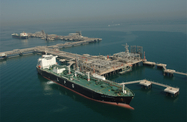Production from Saudi Arabia’s oil fields will remain at near record levels for the next few months, with Riyadh looking to maintain above-average output despite low prices.
In its June meeting, OPEC decided to keep the bloc’s production at 30m barrels per day (bpd), the level agreed in November. According to the International Energy Agency (IEA), combined output by the 12 member states for May was 31.3m bpd, with Saudi Arabia being the largest single contributor to production.
Saudi Arabia pumped a record 10.3m bpd in May and flagged the possibility in June of raising output even further. Ahmed Al Subaey, executive director for marketing at Saudi Aramco, said any increase in global demand could trigger a further rise in production. “We have plenty of crude,” he told Reuters. “You are not going to see any cuts from Saudi Arabia.”
The Kingdom has a production capacity of around 12.5m bpd, which means it has a comfortable margin should it need to raise output.
Global repercussions
OPEC’s decision to keep production levels high, and Saudi Arabia’s suggestion it could further raise output are seen by some analysts as putting additional pressure on North American oil production and exploration. In mid-June, the Canadian Association of Petroleum Producers forecast that shale and conventional light oil production in western Canada would be scaled back to 730,000 bpd by 2019, down from 770,000 bpd this year, a result it said of OPEC’s lower pricing and higher output policy.
However, Saudi Arabia’s decision to step up production is also in part a response to rising domestic demand, especially during peak periods. Estimates from sector consultancy Energy Aspects, based in Vienna, and Boston-based ESAI Energy project a 20% increase in domestic Saudi oil consumption this summer, with the Kingdom’s power stations set to burn 420,000-430,000 bpd, up from 300,000-410,000 bpd in the summer of 2014.
Saudi Aramco Products Trading Company − an arm of Saudi Aramco − reached out to external markets in early June due to the expected seasonal surge in electricity demand. Tapping suppliers in both India and the Middle East, the company bought 1.1m barrels of gasoil for delivery in July, just ahead of the peak consumption period. Due to soaring temperatures, Saudi Arabia has been a top importer of gasoil during the summer months, but imports are set to fall as it adds capacity from new refineries.
Oil price drop
While the IEA has forecast an increase in global oil demand for the rest of the year, the rise is expected to be more muted than in the first half of 2015 due to the “temporary nature” of many of the factors that contributed to expansion in the first two quarters.
Global demand could also be hit by headwinds from Europe, with concerns over a Greek default and an escalation of the conflict in Ukraine potentially dampening prospects for economic recovery. Furthermore, ongoing instability in parts of the Middle East, in particular Iraq, could affect pricing as well.
The fall in global oil prices means that the energy sector’s contribution to Saudi Arabia’s economic growth in 2015 will be limited. A recent report by National Commercial Bank forecast the Kingdom’s GDP will expand by 3.4% this year, roughly in line with the 2014 rate of 3.6%. As was the case last year, growth will be driven by the non-oil sector, which the bank said would increase by around 5%. Growth from the oil sector can be expected to be modest this year after a rise of 1.72% in 2014, even with any increase in production.

